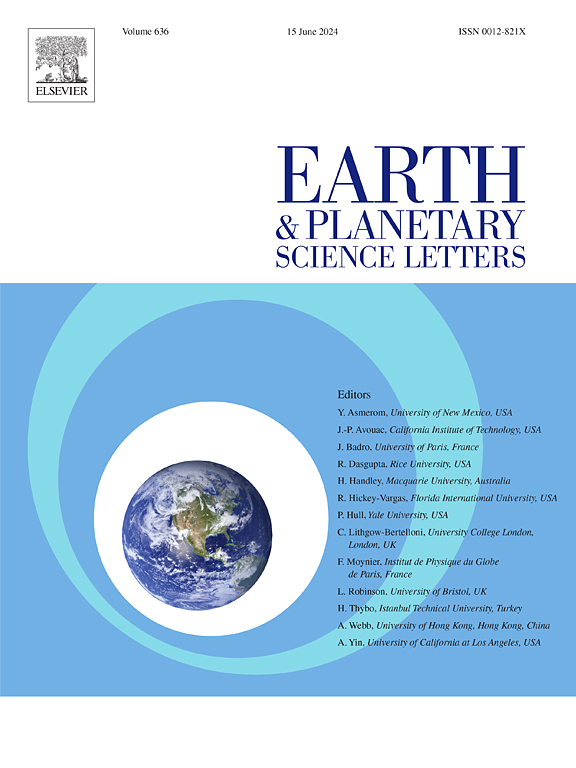Tungsten isotope evolution during Earth's formation and new constraints on the viability of accretion simulations
IF 4.8
1区 地球科学
Q1 GEOCHEMISTRY & GEOPHYSICS
引用次数: 0
Abstract
The Hf-W isotopic system is the reference chronometer for determining the chronology of Earth's accretion and differentiation. However, its results depend strongly on uncertain parameters, including the extent of metal-silicate equilibration and the siderophility of tungsten. Here we show that a multistage core-formation model based on N-body accretion simulations, element mass balance and metal-silicate partitioning, largely eliminates these uncertainties. We modified the original model of Rubie et al. (2015) by including (1) smoothed particle hydrodynamics estimates of the depth of melting caused by giant impacts and (2) the isotopic evolution of 182W. We applied two metal-silicate fractionation mechanisms: one when the metal delivered by the cores of large impactors equilibrates with only a small fraction of the impact-induced magma pond and the other when metal delivered by small impactors emulsifies in global magma oceans before undergoing progressive segregation. The latter is crucial for fitting the W abundance and 182W anomaly of Earth's mantle. In addition, we show, for the first time, that the duration of magma ocean solidification has a major effect on Earth's tungsten isotope anomaly. We re-evaluate the six Grand Tack N-body simulations of Rubie et al. (2015). Only one reproduces ε182W=1.9 ± 0.1 of Earth's mantle, otherwise accretion is either too fast or too slow. Depending on the characteristics of the giant impacts, results predict that the Moon formed either 143–183 Myr or 53–62 Myr after the start of the solar system. Thus, independent evaluations of the Moon's age provide an additional constraint on the validity of accretion simulations.
求助全文
约1分钟内获得全文
求助全文
来源期刊

Earth and Planetary Science Letters
地学-地球化学与地球物理
CiteScore
10.30
自引率
5.70%
发文量
475
审稿时长
2.8 months
期刊介绍:
Earth and Planetary Science Letters (EPSL) is a leading journal for researchers across the entire Earth and planetary sciences community. It publishes concise, exciting, high-impact articles ("Letters") of broad interest. Its focus is on physical and chemical processes, the evolution and general properties of the Earth and planets - from their deep interiors to their atmospheres. EPSL also includes a Frontiers section, featuring invited high-profile synthesis articles by leading experts on timely topics to bring cutting-edge research to the wider community.
 求助内容:
求助内容: 应助结果提醒方式:
应助结果提醒方式:


